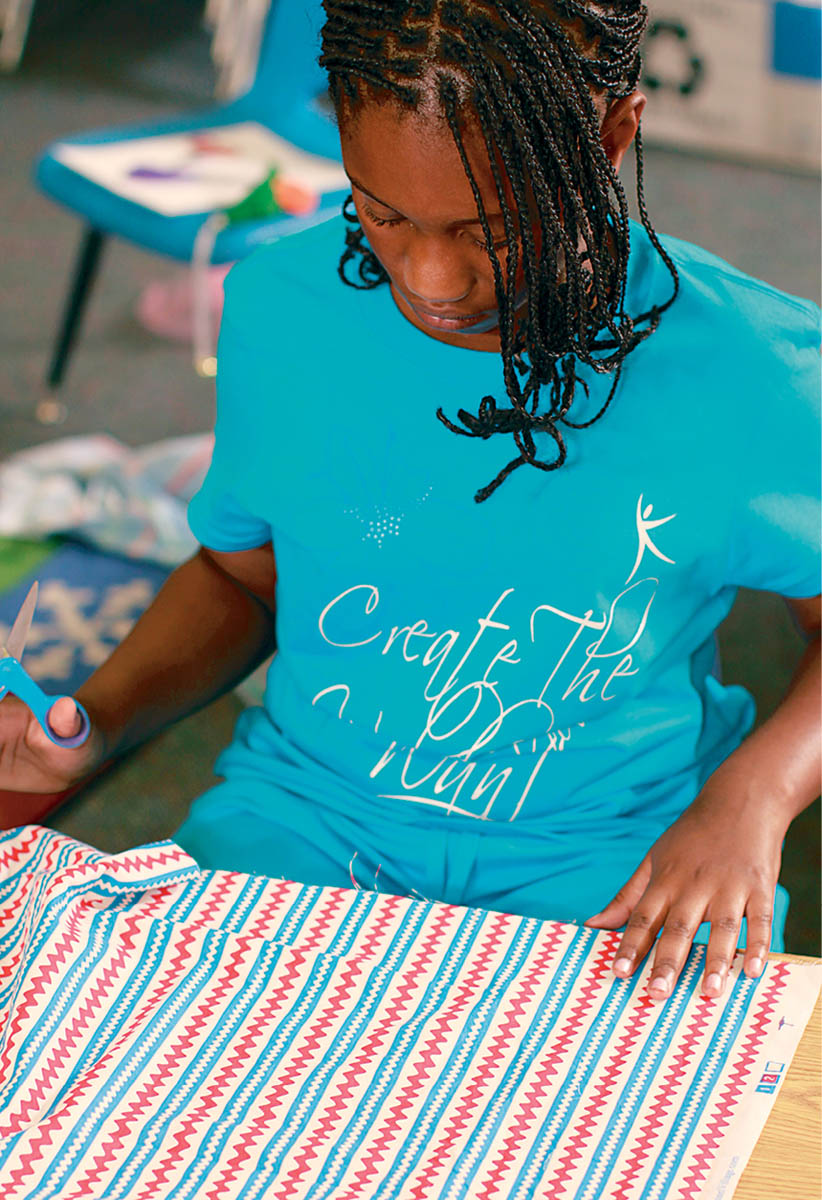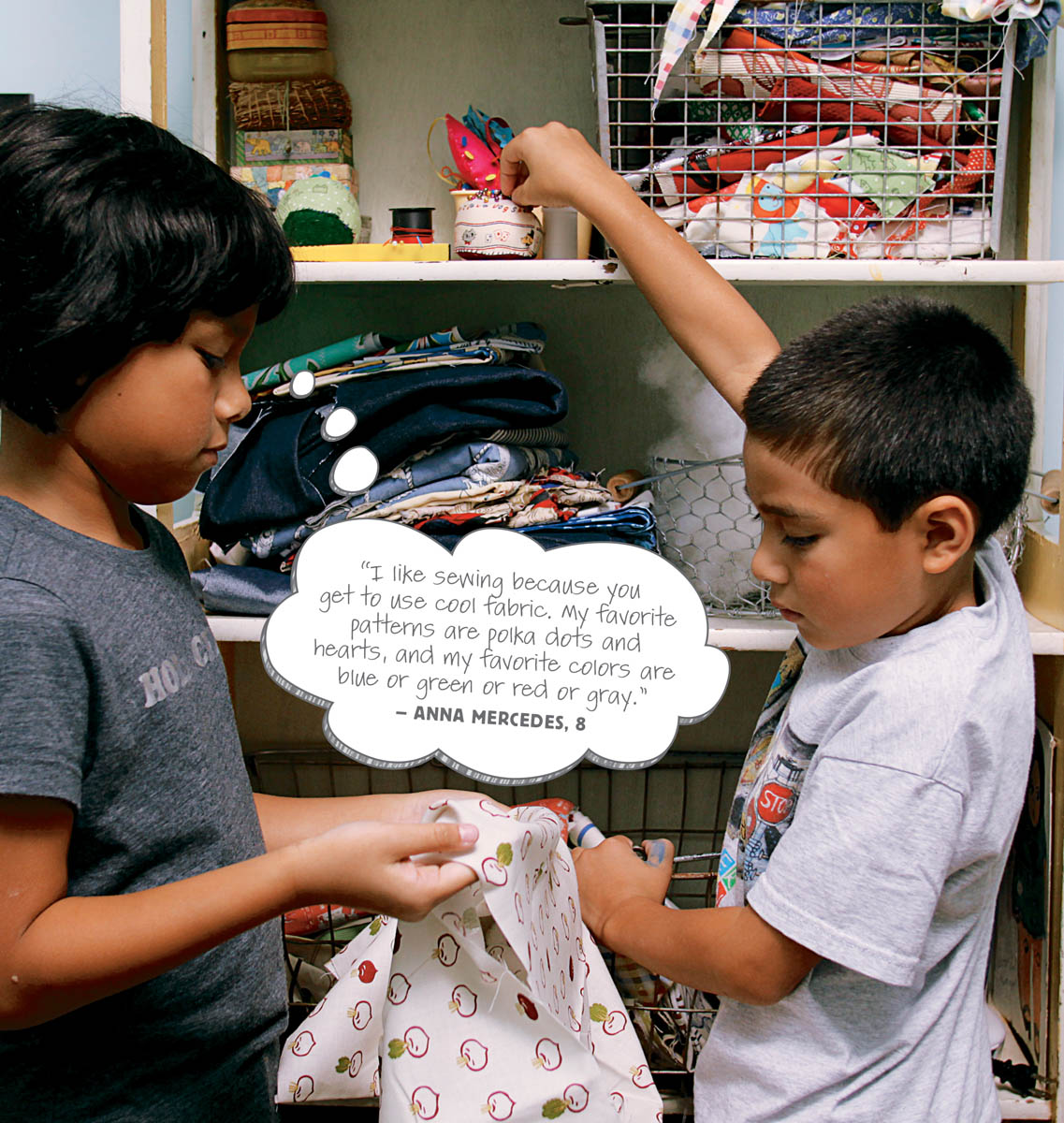
Learning how to choose the right material, or fabric, is very important. Sometimes you need a certain fabric to make a project in this book. Other times you can pick any kind of fabric you like.
Keep in mind that the colors and patterns of the fabric you use can tell the whole world how you’re feeling. Fabric can also give clues about who you are or what you like. Maybe you want to use fabric printed with cats to make a Just-Right Pouch, or maybe you’d like to sew your dad a red, white, and blue Too-Hot Holder to use at a Fourth of July cookout. Use the Resource Guide in the back of this book to find out where to buy all kinds of printed fabric. Or design your own using muslin and fabric markers!
With a grown-up’s permission, you can shop for fabric right inside your own house. Ask if you can have old sheets and pillowcases, towels, or even tablecloths for your fabric stash. Maybe you’ve outgrown clothes you can cut up to make something new. Just be sure to ask first!
If you’re buying new fabric, keep in mind that most of the projects in this book call for fabric that’s about the size of a sheet of paper. A 1⁄4-yard piece is a good amount to buy, unless you are making a big project like a skirt or an apron.
Fold up all your fabric so it stays organized. Maybe you have a shelf or a bin you can keep your fabric in. Get another bin for small scraps, which you can use to decorate your finished projects or use as stuffing in a pinch.
Here are some popular fabrics that were used to make the projects in this book.
 Felt. Felt is a great fabric to have around. It is thick and colorful and bright on both sides. Most felt comes from sheep’s wool, although some felt is man-made. The important thing to remember about felt is that it will not fray — when you cut it, there are no loose threads that you have to hem or sew down. Felt usually comes in squares that are just the right size for the projects in this book.
Felt. Felt is a great fabric to have around. It is thick and colorful and bright on both sides. Most felt comes from sheep’s wool, although some felt is man-made. The important thing to remember about felt is that it will not fray — when you cut it, there are no loose threads that you have to hem or sew down. Felt usually comes in squares that are just the right size for the projects in this book.

 Fleece. Fleece is like felt, but it’s softer and not as scratchy. A lot of times, fleece is made from recycled plastic water bottles! Be sure that your needle is sharp when you’re sewing with fleece, because pushing a needle through this thick fabric can be tough. At the fabric store, ask if they have any small pieces of fleece on sale. Wash fleece before you sew to make it really soft!
Fleece. Fleece is like felt, but it’s softer and not as scratchy. A lot of times, fleece is made from recycled plastic water bottles! Be sure that your needle is sharp when you’re sewing with fleece, because pushing a needle through this thick fabric can be tough. At the fabric store, ask if they have any small pieces of fleece on sale. Wash fleece before you sew to make it really soft!
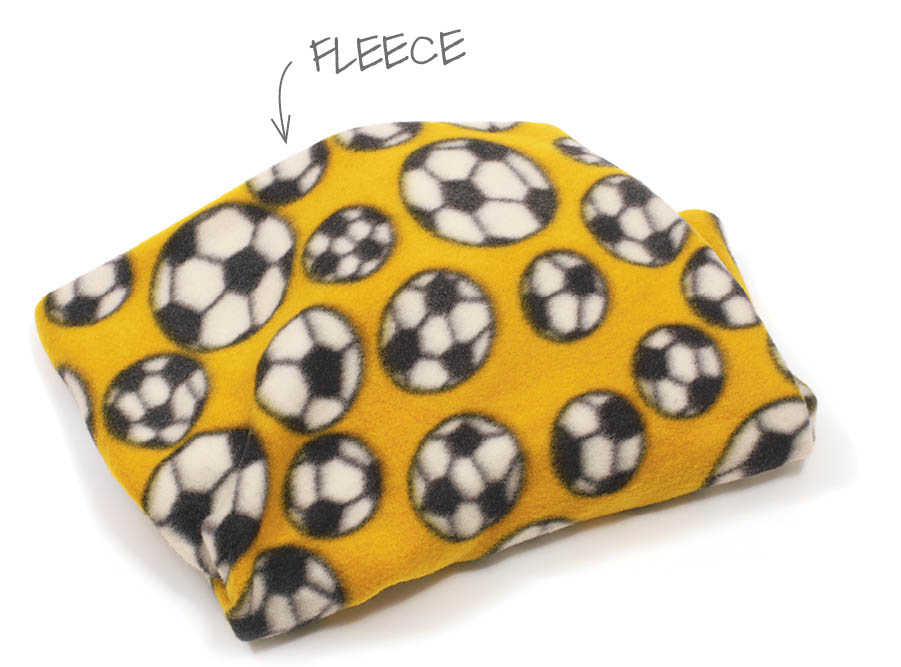
 Cotton. Cotton fabric is easy to cut and sew, but it frays, or fringes, when you cut it. If you buy cotton fabric, ask a grown-up to wash it before you use it, because it might shrink a little bit. Afterward, cotton fabric might need to be ironed. If so, ask a grown-up for help.
Cotton. Cotton fabric is easy to cut and sew, but it frays, or fringes, when you cut it. If you buy cotton fabric, ask a grown-up to wash it before you use it, because it might shrink a little bit. Afterward, cotton fabric might need to be ironed. If so, ask a grown-up for help.
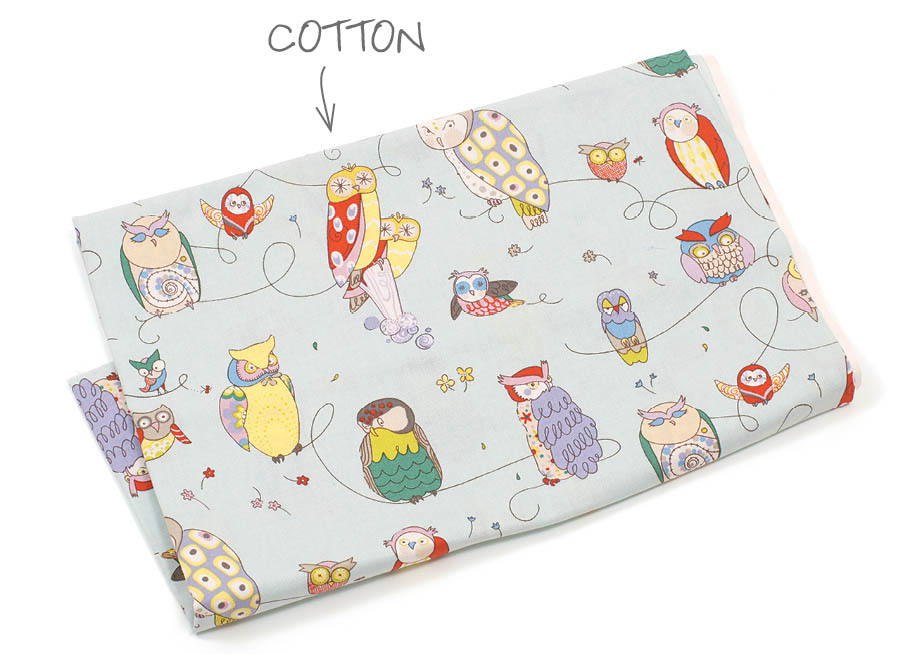
Most cotton fabrics have two sides — a front and a back. Pay attention to the front, or good side, of the fabric when you’re cutting and sewing, and be careful to keep the good side of the cotton on the outside of your project. The good side of the fabric is the one where you can see the print really well. On the other side, the print looks faded.
Sometimes you put the good sides out. Here, the elephants are brighter on the good side. When you sew, you can see all of your stitches.
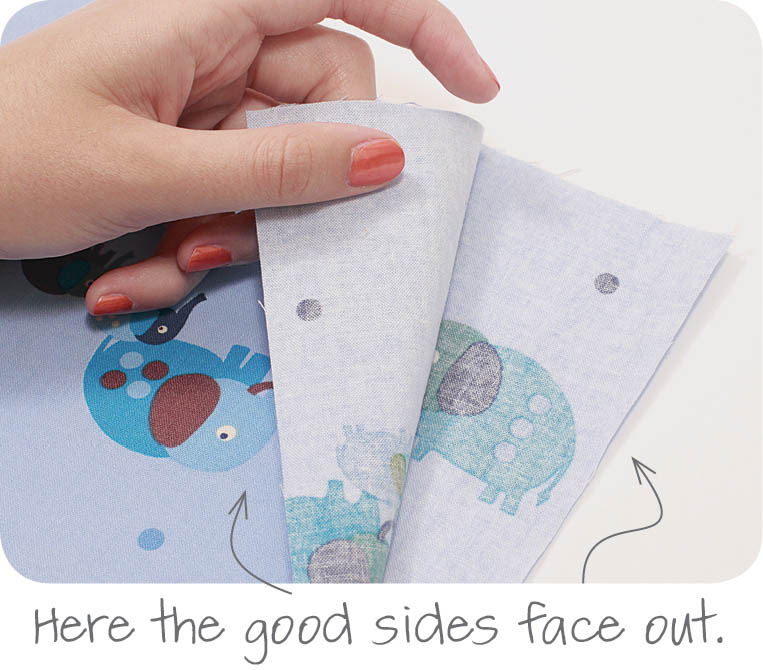
When you don’t want to see the stitching, you put the good sides together. The medals are brighter on the good side. Then you turn what you are sewing good side out.

Fabric stores sell cotton fabric by the yard (3 feet of material at a time). At many stores, you can buy as little as 1⁄8 yard. Or ask if they sell fat quarters, which are 1⁄4-yard squares of cotton fabric used by quilters.
 Muslin. Muslin is a thin cotton fabric the color of oatmeal. If you want to use crayons or fabric markers to draw designs or a pattern on the fabric, muslin is a great choice. Try drawing your picture or pattern on paper first, then trace it onto the muslin with a pencil. It helps if you tape the fabric down to the table before drawing on it. Like cotton, muslin frays, but it doesn’t have a good side.
Muslin. Muslin is a thin cotton fabric the color of oatmeal. If you want to use crayons or fabric markers to draw designs or a pattern on the fabric, muslin is a great choice. Try drawing your picture or pattern on paper first, then trace it onto the muslin with a pencil. It helps if you tape the fabric down to the table before drawing on it. Like cotton, muslin frays, but it doesn’t have a good side.

Make sure you have a pair of scissors that are used just for cutting fabric. If you use these scissors on paper, they’ll be too dull to cut the fabric well, which can get very frustrating. Keep in mind that whether you’re cutting out a small piece or a big pattern, you want to start at one edge instead of cutting from the middle of the fabric. And if you’re cutting cotton, stop and make sure you know which side of the fabric is the good side. For patterned fabric, make sure the design is going the right way or it might end up upside down!
